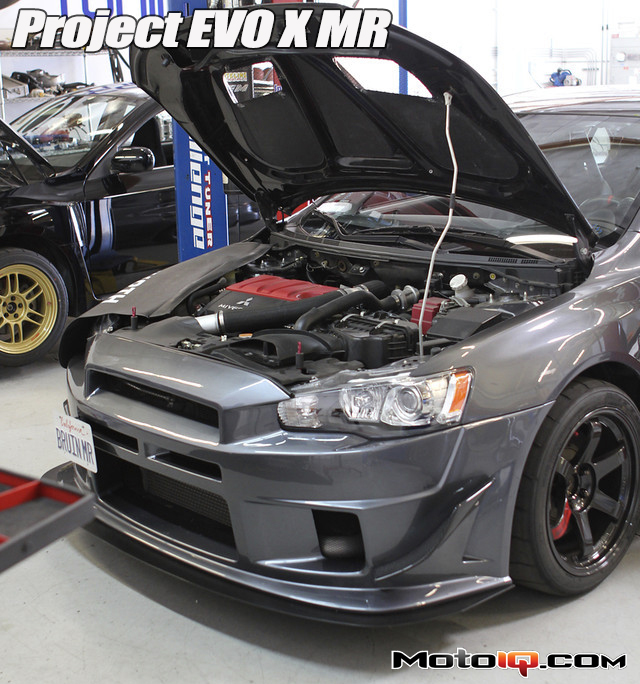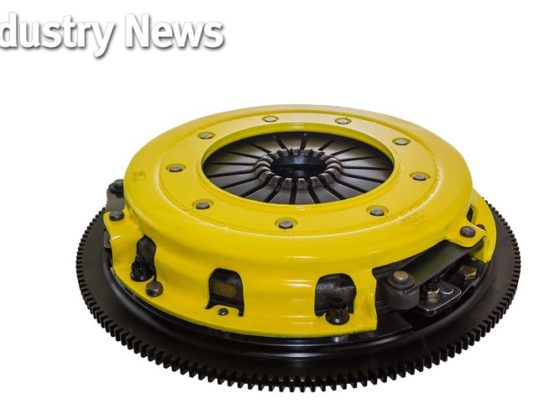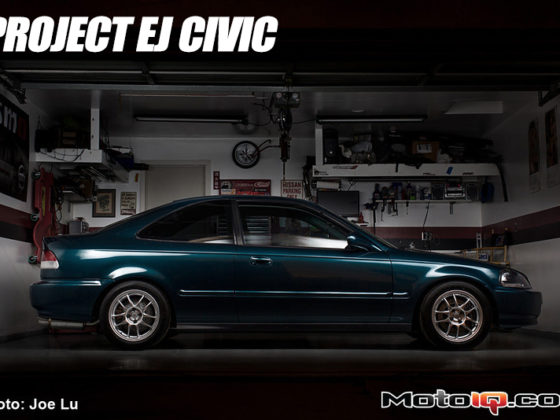
The Project Evo X MR is back!
By Cheston Chiu
Just when you thought all was lost, the MotoIQ Project Evo X MR is back on track.
As previously stated back in the November 2011 article Project Evo X GSR – Testing the K&N Cold Air Intake. “The owner”, aka. ME, was fairly reluctant to venture beyond simple engine bolt-ons mainly due to concerns with the twin-clutch SST transmission and its ability to hold power. The other excuse, which I think would supersede anything else, was the fact that the project stalled because my wife and I were trying raise our one-year old daughter at the time. All we did was go to work and then come home to take care of her (and the dog)—which didn't allow a whole lot of time for hobbies. Now, let's fast forward to today, I have a little bit more free time since Mike wrote that article, my daughter is getting easier to manage, and during the hiatus I've stockpiled a bunch of awesome parts that I'd like to chronicle for MotoIQ.
Read More About Project EVO X Here!
The X MR has been driving great since the addition of the Stoptech Trophy BBK, 18″ Volk Racing CE28Ns and Nitto NT05s and the plethora of suspension goodies from KW and Whiteline but what it was really lacking, was power! Thankfully, it's pretty easy to make power on the 4B11 by simply letting it breathe better (intake and exhaust) and giving it some smarts through an ECU reflash tune. I knew exactly where I could get both things done: Cobb Tuning SoCal. I contacted Ronnie Bock at Cobb's Fountain Valley, CA facility and setup a parts installation and custom ProTune session.
Before we dive into the ECU tuning details, let's do a quick overview of the parts to be installed and my rationale behind their acquisition.
1. AEM Cold Air Intake
For an intake, I desired a direct replacement option for the OEM airbox that would provide the same (or close to) thermal isolation of the air filtration element from the heat produced by the engine bay. [True, I could have went with say a drop-in style panel filter, but where's the sexiness in that?] Unfortunately for the MR, most commercially available cold air intakes were designed to draw air from either behind the fender well or directly from the fog light area—areas that would be out of the question since our factory MR transmission cooler is in that exact location.
Fortunately, AEM's Evo X Cold Air intake (p/n: 21-678C) design provided exactly what I was looking for and the price point was attractive versus other short-ram style open filters. The kit includes: a thick ABS-plastic molded air box with metal lid, an internally smooth bent inlet pipe to feed the turbo, an oil-free air filter with sufficient surface area for the engine displacement, a metal MAF sensor tube for the filter to attach to, and all the necessary hose clamps and clips for installation. (Bonus feature: it's even CARB exempt!) The AEM cold air box reuses the rubber mounting grommets which are located on the OEM air box, as well as the snorkel pipe to provide cooler ambient air toward the filter during driving.

The AEM CAI has a rotationally molded air box to maintain the factory cold air induction. We feel that this is much better than breathing in hot underhood air which can reduce power by as much as 10-12 hp depending on the amount of heat soak. A large filter has much more surface area than the stock filter element.
The OEM intake inlet pipe that feeds toward the turbo looks like an accordion and has lots of internal ribbing, not the ideal situation when you're trying to suck air inwards. Although the air is going to get compressed into the turbine almost immediately, smooth air delivery means the air can get into the turbo faster, and subsequently allow for faster spool.
 |
| The OEM air box, including the MAF sensor, and stock blow off valve weighed in at 6.10 lbs. The AEM intake components weighed in at exactly 6.10 lbs as well. The stock intake tube is quite corrugated which causes turbulence in the pipe. |
The included installation instructions were very thorough and included step by step diagrams…. of course since we're all engineers here, you can pretty much figure it out just by looking at it 🙂
2. ARC Intercooler
One does not simply own an Evo X and not attempt to put some JDM bling on it. The ARC intercooler (P/N: M073CZ4AG) is a direct factory replacement with “patented cooling fin design” and a slightly wider core. No modifications are required to the front crash support beam or to the bumper for this intercooler to fit. retaining this crash support beam in unmolested condition is certainly a good idea for my daily driver street car.
 |
| The OEM intercooler core dimensions are: 19.25″ L x 11.5″ H x 2.5″ W. The ARC intercooler core dimensions are: 21.0″ L x 11.0″ H x 2.5″ W. Both intercoolers are tube and fin design but the ARC part has internal turbulators that help conduct heat to the outside of the tube more efficiently than stock. |
The ARC has cast aluminum end tanks that are angled similar to stock, with inlet and outlet openings with an O.D. of 60mm (2.36″) that mate to the factory upper and lower intercooler pipes. (More on this later). Since I'm sticking with the OEM turbo for now, the ARC intercooler capacity should be plenty for the stock boost levels. In an attempt to somehow justify the replacement of the stock core (well, I need some proof that the ARC is better than stock) I tried to calculate the internal flow area of the ARC (using Corky Bell's equations in his book “Maximum boost”).
Internal flow area (ARC) = Channel Length [21.0″] x channel width [0.4″] x number of channels [14] = 117.6 sq.in.
Internal flow area (OEM) = 19.25″ x 0.20″ x 25 =96.25 sqin.
Ok, so a modest 22% improvement if I got all my measurements correct.
Now, a simple airflow rate calculation of frontal area (speed x frontal area) of OEM vs ARC at an example speed of 60mph.
Airflow rate (ARC)= 60 mi/hr x Frontal Area (1.60 sq.ft) x 5280 ft/mi x 1/60 hr/min = 8448 cfm.
Airflow rate (OEM) = 60 mi/hr x 1.537 sqft x 5280 ft/mi x 1/60 hr/min = 8115 cfm.
There is a 333 cfm advantage on the ARC and if we're saying that the internal flow area is 22% larger than OEM, then clearly the advantage to the ARC. (Whew…JDM bling justified!)
 |
| The OEM intercooler weighed in at 9.7 lbs. |



